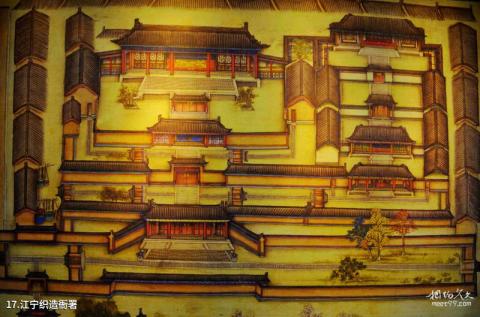
Introduction to Jiangning Weaving Office: The panoramic view of Jiangning Weaving Office shows the layout of the Qing Dynasty. In the second year of Shunzhi in the Qing Dynasty (1645 AD), the Qing government restored the Jiangning Weaving Bureau of the Ming Dynasty. It was initially divided into two parts: the Weaving Office and the Weaving Bureau. The government office is the residence and official office of the weaving officials, and the weaving bureau is the factory that produces silk fabrics. From the Kangxi to Qianlong periods, Jiangning Weaving Department gradually became the location of the emperor's southern tour palace, with an unprecedented scale. During the Xianfeng period, Jiangning Weaving Department was destroyed by the Taiping Heavenly Kingdom war, and was later relocated and rebuilt. In the early years of Guangxu's reign, the weaving and production of various products was stopped, and it was abolished in the 30th year (AD 1904). Since the Qing Dynasty, the Jiangning Weaving Department has existed for more than 260 years, witnessing the vicissitudes of the Qing Dynasty from prosperity to decline. Among them, the rise and fall of the Cao family in Jiangning Weaving for nearly 60 years during the Kangxi and Yong reigns is the most eye-catching.
